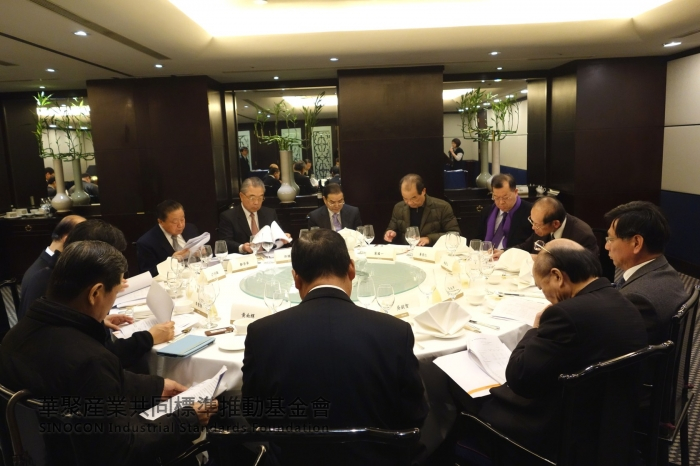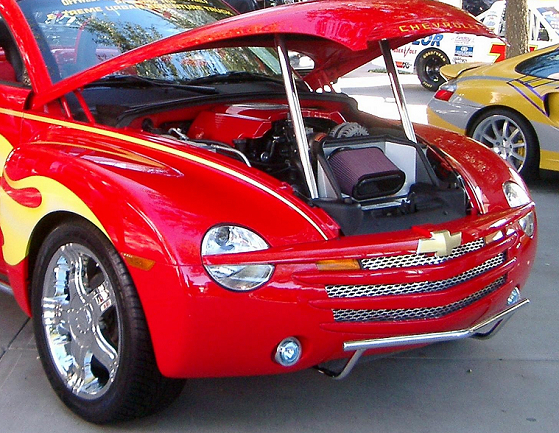Safety Becomes Growing Focus for Auto Industry
New rules and new technologies will reduce accidents on China's streets
2014/03/06 | By Michelle HsuBy MICHELLE HSU
In the burgeoning Chinese auto market, safety has joined worsening air pollution as a focus of major concern. With more and more new cars on the road and more and more novice drivers behind the wheel, traffic accidents are soaring and casualty figures skyrocketing.
“How can we bring down the incidence of traffic accidents on our danger-ridden roads?” was the focus of discussion at the 2013 (forth) China Automotive Safety Technology Development International Forum 2013, held in Zhuhai, Guandong Province last November.

“This is something which concerns not only consumers but is also a subject of study for automobile manufacturers, parts suppliers and others in the industry,” according to the forum organizer, the SINOCON Industry Standards Foundation, founded in 2005 to bring together industry leaders from both sides of the Taiwan Straits. The Foundation's statement went on to say that the forum was organized to make the answers to car safety appear simple and straightforward—let “smart” cars take the responsibility for protecting “reckless” humans!
Active Safety Evaluation
Obviously, more stringent standards for the evaluation of automotive safety technology are needed. Liu Yu-guang, deputy chief engineer at Chinese C-NCAP Management Center, revealed at the forum that current C-NCAP (China New Car Assessment Program) regulations will be upgraded again in 2015 with the aim of providing better assessment of the passive safety of new drivers.

Evaluation procedures for the latest version of C-NCAP are to be drafted this year and finalized and published in 2015, with more consideration being paid to the evaluation of active safety measures.
The reason for the upgrading is to make the C-NCAP assessment rules for new cars more stringent. Testing will be required for frontal, diagonal, and side impacts, and will include whiplash collision testing. New thresholds will be set for star grading, and the new version of C-NCAP will call for a “5 Star” ranking similar to that used for hotels and restaurants.
“In the medium to long term, C-NCAP studies will focus on the four principal areas of active safety, collision forms, measuring of results, and security assessment,” said Liu. In the long term, C-NCAP will become more involved in the active development of smart security technology, new collision forms (side column collisions, rear-end tailgating collisions of commercial vehicles, and so on), measuring devices (WorldSID dummies and child dummies, moving barriers, active safety testing devices), and more safety projects (lamp performance assessment, pedestrian protection assessment).
Child Safety Seats
One of the decisions reached by the forum was that mandatory certification for child safety seats should be introduced this year. Child safety has become a focus of attention in China over the years; but by the standards of the U.S. and Europe, most Chinese parents ignore the safety of children as car passengers. Worse, the awkward, ill-fitting child safety seats that are such an expense for parents do not guarantee safety.

The Beijing government announced “Motor Vehicle Occupant Restraint System” standards for child safety seats in July 2012; but those standards, mostly involving technical requirements for the production and sale of child safety seats, are simply technical rules and the actual use of child safety seats has not been made mandatory in China. "Child safety seats must conform to the law,” said Qu Yan-ping of the China Quality Certification Center, “and a compulsory certification of child safety seats will begin in 2014.” Certification, but not use, will become mandatory.
It has also been reported that the China Automotive Technology and Research Center is currently planning to establish protection standards for child safety seats with respect to vehicle side collisions, which are not addressed by current collision protection standards.
Auxiliary Technology
To strengthen auto safety, China's whole-car manufacturers are teaming up with their satellite parts suppliers to jointly upgrade the intelligent auxiliary technology incorporated in their vehicles. In the future, they expect, such technology will turn gradually toward driver assistance, which is designed to avoid accidents caused by human misjudgment and bring down the accident rate.

In recent years, Bosch and Continental have joined with China's car manufacturers in this effort and have invested heavily in the development of vehicle intelligent assistance technology systems.
Chen Liming, president of Bosch Chassis Systems Control China, reported that his company is currently developing advanced driver assistance systems, including predictive emergency braking systems, self-adjusting cruise function, and road sign and object recognition capabilities, to promote a gradual transition to driver-assisted vehicles in the future.
The head of Continental's chassis & safety systems integration and intelligent technology application, James Remfrey, said that Continental aims to use intelligent assistance systems (including ESC, lane departure warning, and automatic emergency braking system), instead of driver perceptions of road and vehicle conditions, to reduce accidents caused by human error.
Continental AG estimates that the period of 2016 to 2025 will witness the realization of an initial level vehicle driver assistance and the completion of development of advanced driver assistance systems, which will significantly reduce the accident rate.
Beginning in 2016, some automated systems are expected to provide drivers with “start-stop” assistance at speeds of no more than 30 kph. The technology will be improved so that by 2020, advanced driver assistance technology will be able to allow drivers, under normal driving conditions and at speeds of 30 kph or more, to engage in other activities such as browsing the Internet or looking at Weibo.
Active and Passive Safety Systems
Industry experts claim that in the future, cars will know how to better protect people. Some models produced in China already use ACC, AEB, and LDW systems, improving not only driving safety but also ease and comfort.
At the forum, representatives of Delphi said their company is involved in research on passenger monitoring systems (PODS), radar and visual fusion systems (full speed ACC, transport sign identification systems, etc.), and human and vehicle interaction systems (monitoring and evaluating driver characteristics in order to control the braking, steering, and engine systems) and so on, some of which have already found application.
A representative from Yanfeng Key, a China-based auto parts maker, commented that self-adjusting seat belts, inflatable seat belts, knee airbags, and self-adjusting airbags (with airbag shape determined by occupant body shape and collision forms) will be smarter in the future, reducing passenger injury caused by airbags and seat belts, and that they will provide better early-warning protection.
Wang Zhen-fei, systems engineering manager at TRW Automotive Research and Development (Shanghai) Co., talked about a possible future in which reversible pre-tensioning technology will be standard on all cars. This technology can play a role in different collision scenarios; reversible pre-tensioners can reduce passenger displacement during emergency braking and emergency steering, thus avoiding injuries caused by frontal or side impact with airbags or car body due to improper body position. “In the future this technology will likely be added to the E-NCAP rating system,” Wang remarked.
Within the next few years, the forum concluded, “cars will more intelligently protect their passengers, and even minimize injury to passengers in serious car accidents.” These are not the whimsical imaginings of development experts, but the reality of a safer future.




